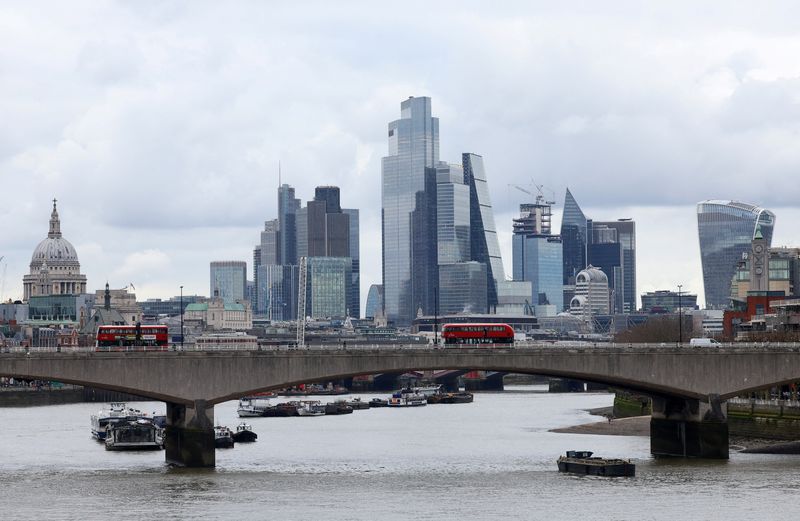Explainer-Who are the bond vigilantes and are they back?
2025.01.14 01:22
LONDON (Reuters) – High government spending and a growing need among big economies – from the United States to Britain and France – to tap bond markets to fund their outlays have shot up the list of concerns for some policymakers and investors.
This year has started with a selloff across global government bond markets, with Britain in particular caught in the crosshairs.
France’s inability to enact belt-tightening measures due to political instability has also hurt its standing in financial markets. And rising U.S. Treasury yields suggests some sceptism among investors that a new U.S. administration will curb a high budget deficit.
No wonder talk of a return of bond vigilantes is growing.
WHO EXACTLY ARE BOND VIGILANTES?
The term, coined in the 1980s, refers to debt investors who seek to impose fiscal discipline on governments they perceive as profligate by raising their borrowing costs.
It can also apply to monetary policy. Investors can demand more compensation to lend money if they think central banks and governments are failing to contain inflation.
Higher government borrowing costs can spill over into higher lending rates for consumers and companies, putting economic and financial stability at risk if they spiral out of control.
WHERE DID THEY GO AND ARE THEY BACK?
Bond markets were placated in the 1990s as U.S. President Bill Clinton’s government made balancing the budget a priority after initial spending concerns sparked a jump in Treasury yields.
In the following decades, central bank bond buying in the United States and elsewhere played a powerful role in dampening government borrowing costs, particularly after the global financial crisis of 2007-2008.
But a surge in inflation since 2021 and a jump in government spending, exacerbated by the pandemic and energy-price spike following Russia’s invasion of Ukraine, combined with a retreat of central banks from bond buying, means bond investors now carry more heft.
WHAT ELSE HAS CHANGED?
The focus today is on the surge in government bond issuance while in the 1980s, it was inflation, says Ed Yardeni, the economist who coined the term back then.
Inflation, though sticky, has come down in big economies, while debt is piling up.
The U.S. budget deficit grew to $1.833 trillion for the fiscal year 2024, equivalent to 6.4% of economic output, the highest reading outside of the COVID-19 pandemic. Britain’s government debt has hit 100% of economic output for the first time in recent history. Germany is the only G7 economy remaining with a debt ratio below 100%.
WHERE HAVE THESE VIGILANTES BEEN IN ACTION RECENTLY?
The biggest example is Britain. Borrowing costs surged one percentage point within a week in 2022 as bond investors were spooked by plans to slash taxes and raise borrowing at a time the national finances were already under pressure. That forced a policy U-turn and the resignation of then-Prime Minister Liz Truss.
On Monday, Britain’s long-dated government bond yields hit fresh multi-decade highs as global debt concerns remain in focus.
Last year, the premium that bond investors demand to lend money to France over safer German debt briefly hit its highest since 2012 as political turmoil stalled efforts to reduce the budget deficit.
Emerging markets face pressure too. Brazil’s borrowing costs jumped in December while the real hit fresh record lows against the dollar as markets put government spending plans and a wide budget deficit to the test.
SO, THEY REALLY ARE POWERFUL?
History suggests so and Yardeni reckons their strength now stems from the fact that outstanding debt has shot up in recent years.
U.S. Treasuries outstanding have surged to $28 trillion, from below $20 trillion before the pandemic and less than $5 trillion before the 2007-2008 global financial crisis.
Yet bond vigilantes haven’t had the sway they’ve had in Britain elsewhere yet. The U.S. deficit has not declined despite concerns and French politicians torpedoed a belt-tightening budget even though the prime minister warned it could lead to a financial “storm”.

Still, analysts say that a rise of more than one percentage point in U.S. Treasury yields since late September partly reflects bond investors expressing concern about the spending plans of the incoming Trump administration.
But the prospect for interest rates remaining higher amid a strong economy is also raising yields.








